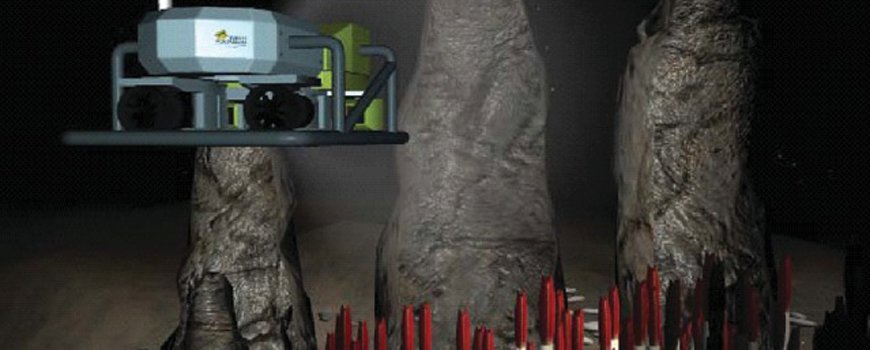International Competition Honors Interactive Video Game Developed at Scripps Oceanography
Visually immersive game based on real-world research and ocean exploration recognized by science and engineering visualization challenge.
(From SCRIPPS / by Mario C. Aquilera/NSF/AAAS) — A video game designed at Scripps Institution of Oceanography at UC San Diego that promotes scientific concepts based on real-world research, while engaging young minds with an immersive and interactive environment, has received an international honor.
The Deep-sea Extreme Environment Pilot (D.E.E.P.) video game, based on the National Science Foundation’s (NSF) Ocean Observatories Initiative, received honorable mention in the “games and apps” category of the highly acclaimed 2013 International Science and Engineering Visualization Challenge.
The challenge, now in its 11th year, was created to exemplify the axiom “a picture is worth a thousand words.” Sponsored by NSF and the American Association for the Advancement of Science, which publishes the journal Science, the challenge celebrates the long tradition of using various visualization media to communicate the complexities of science, engineering, and technology for education and journalistic purposes when words aren’t enough.
D.E.E.P., developed by Danny Rohrlick on the Xbox platform, emphasizes oceanographic concepts and reinforces targeted science learning goals. Tested through a multitude of youth programs in San Diego, including those at Birch Aquarium at Scripps, the Boys and Girls Club of San Dieguito, the Ocean Discovery Institute, and local high schools and middle schools, D.E.E.P. takes players on a compelling and realistic ride as pilot commanders of a remotely operated vehicle (ROV) through challenges spanning from virtual hydrothermal vents to a deep coral reef environment.
Rohrlick was also honored in the top 10 in interactive videogames in the 2011 challenge.
“Based on data from our work, when designed effectively, educational games can engage players, teach concepts, and tear down the stereotype of the stuffy, boring educational game,” said Rohrlick.
“Scripps provides an environment that enables innovative advancements in education such as D.E.E.P.,” said Debi Kilb, a scientist with the Scripps Institute of Geophysics and Planetary Physics (IGPP) who was part of the team that developed and tested D.E.E.P. “The Visualization Challenge honor is another demonstration of Scripps’s leadership in educational initiatives that enhance learning experiences.”
Visualization challenge awardees were selected from 227 submissions from 12 countries, including entries from 17 U.S. states and Canadian territories.
“We asked contestants to provide visualizations that illustrate powerful scientific concepts,” said Judith Gan, NSF’s director of Legislative and Public Affairs. “We were delighted by this year’s entries. These visualizations are both beautiful and captivating; they connect scientists with citizens in a way that excites popular interest of subjects normally reserved for academic rigor.”
A committee of staff members from Science and NSF screened the entries and sent finalists to an outside panel of experts in scientific visualization to select the winners. In addition, nearly 2,000 votes determined the public’s favorite images as People’s Choice awardees.
“The winners offer a feast for the eye and the mind, making complex science vivid and beautiful,” said Tim Appenzeller, Science‘s chief news editor.
Winning entries feature the earth and planets sitting in the crosshairs of multiple streams of solar power, a game that allows users to map the brain, wearable energy storage to power future generations of electronic clothing, and other compelling visualizations.
Also sharing the D.E.E.P. honor with Rohrlick and Kilb are Scripps colleagues Eric Simms and Cheryl Peach and Charina Cain Layman at Birch Aquarium at Scripps.
D.E.E.P. can be downloaded for free at siogames.ucsd.edu. Other games featuring immersive seismic station deployments and challenges with real-time earthquake data are also available.

